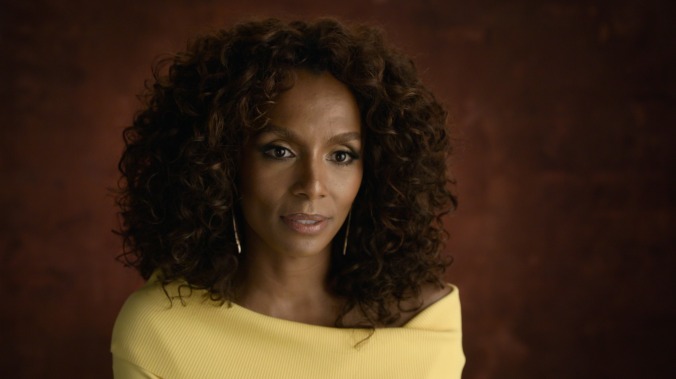Visible: Out On Television brilliantly traces LGBTQ representation through TV history

In Visible: Out On Television, a new five-part docuseries from Apple TV+ that tracks LGBTQ representation in American television, there’s a consistent thread of innovation. Many of the TV creators featured in interviews talk of how they had to create the narratives that were missing, create their own stories. But the series also reaches back into a time when closeted performers had to create personas for themselves in order to survive in a homophobic industry. Queer activists also had to claim space in the news, interrupting live broadcasts to demand that major news outlets actually cover LGBTQ realities. Using talking-head-style interviews with actors, writers, producers, activists, news anchors, and more, Visible: Out On Television establishes an inclusive and incisive narrative of queer resistance and queer invention.
Visible starts with the live coverage of the 1954 Army-McCarthy hearings, during which homosexuality was framed as a threat to national security. This is the first direct mention of homosexuality on American television, a dark reality that had a huge impact on public perception of queerness and shaped early LGBTQ representation in the medium. The docuseries simultaneously explores politics and pop culture, sharply looking at not just scripted television but also TV as a whole: from news to sitcoms, dramas to soaps, and network to cable to reality.
The series’ interviewee roster is broad and deep, and everyone brings something to the table, be it their personal story or cultural criticism, or both. Visible entwines personal narrative, broader historical context, and media analysis quite brilliantly. While including some interviews with straight subjects, it also primarily centers queer and trans interviewees. Margaret Cho speaks like a media scholar, sharp and incisive in her commentary. Wilson Cruz—who executive-produces the series alongside Wanda Sykes—similarly brings clarity and a breadth of historical and political knowledge to his interviews. It sounds weird to dub someone a standout star of a docuseries, but Visible has one and it’s Billy Porter. He has a moment in third episode “The Epidemic” that almost seems to stop time in its tracks, making what he says so urgent, so necessary.
The five episodes build on each other but are also in conversation with one another, weaving a coherent but layered and multidimensional narrative that pulls from history, culture, and American politics. It’s tough to reinvigorate the talking-head documentary format, but Visible: Out On Television keeps it engaging. Strong editing, production, and structure make it seem like the many people interviewed are genuinely in conversation with one another, like when Anderson Cooper talks about his decision to read the names of the Pulse victims and then Cruz shares why he found that moment significant. Similarly, Cooper, Don Lemon, and Rachel Maddow talk about their decisions to come out publicly, segments that are followed by Mark Segal—who famously interrupted Walter Cronkite on live television to demand news coverage of queer issues—talking about what that means to him.
Visible also allows its subjects to draw clear connections that speak to the ripple effects of different events covered in the series. Hollywood is small (a quaint way of saying that it’s heavily guarded by gatekeepers and barriers to access), and the legacies of TV’s queer pioneers are celebrated today, but their stories affected the industry in complicated ways. George Takei talks about how the rumors that former child actor and politician Sheila Kuehl lost her untitled series, a spin-off of The Many Loves Of Dobie Gillis, because she was too butch informed his own behavior: not wanting to appear too gay for fear of the same fate. Raven-Symoné knew she was a lesbian from a very young age, but she saw the backlash to Ellen Degeneres’ coming out in 1997 and didn’t want the same to happen to her. These indirect conversations between different subjects are compelling, and even as Visible jumps around a lot, it presents a tightly woven narrative.
It would be egregious to discuss queerness and television without digging deep into the history and lasting impact of the HIV epidemic and the ways television was used as a tool by both the people who sought to vilify its victims and those who were seeking justice. Visible continually interrogates the duality of television in its ability to both silence and empower. An entire episode is dedicated specifically to the HIV crisis and the activists fighting for visibility while fighting for their lives. It’s a striking episode, one that epitomizes all that the docuseries does well on the whole—reframing certain pop culture moments as political ones—such as its analysis of The Real World, which is often credited as a trailblazer for modern reality television but is also hugely significant in the way it introduced American viewers to Pedro Zamora, an HIV-positive, young, gay man.
While there’s an overall arc of progress, Visible remains realistic and grounded in how it frames this history, with several of the subjects acknowledging that there’s still much work to be done, especially in terms of trans representation and narratives that center queer people of color. It celebrates victories like the groundbreaking series Pose while still pointing to the lingering effects of invisibility and the codified homophobia of early television, like the persistence of the “bury your gays” trope. Not all of the creators interviewed here are merely celebrating their accomplishments; Jill Soloway reconciles with the mistakes they made in the creation of Transparent—namely, casting a cis man in the role of a trans woman. And trans interviewees draw a clear line between this approach to casting and the rise of anti-trans bathroom legislation. Again, Visible intertwines politics and pop culture with intelligence and clarity. Like any good story, it has heroes, villains, triumphs, obstacles, conflict, and catharsis. It contains many messages at once, but there’s one that stands out across it all: Television still needs more LGBTQ stories, and it needs LGBTQ people creating them.